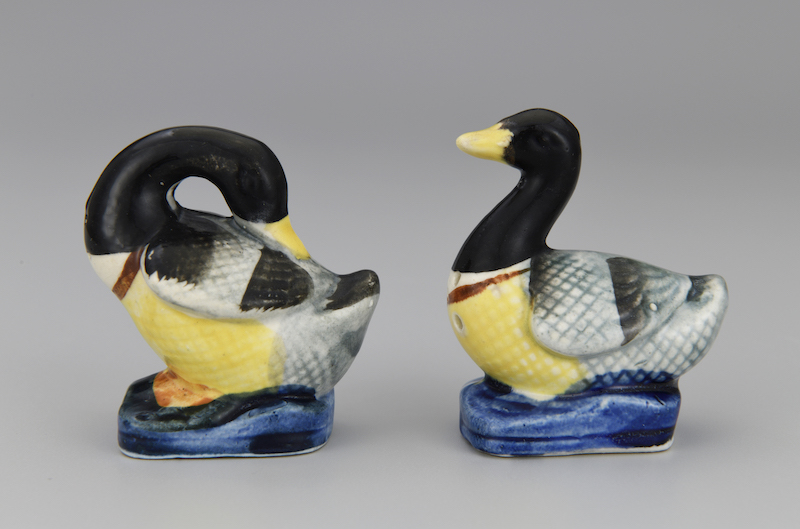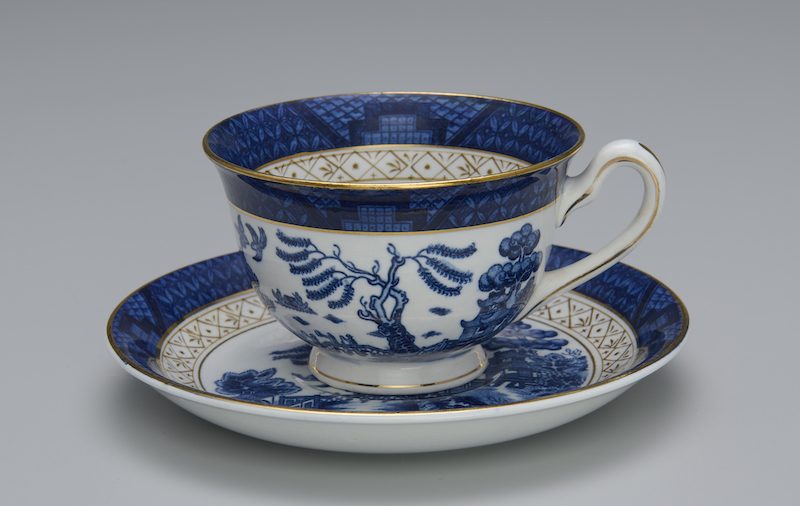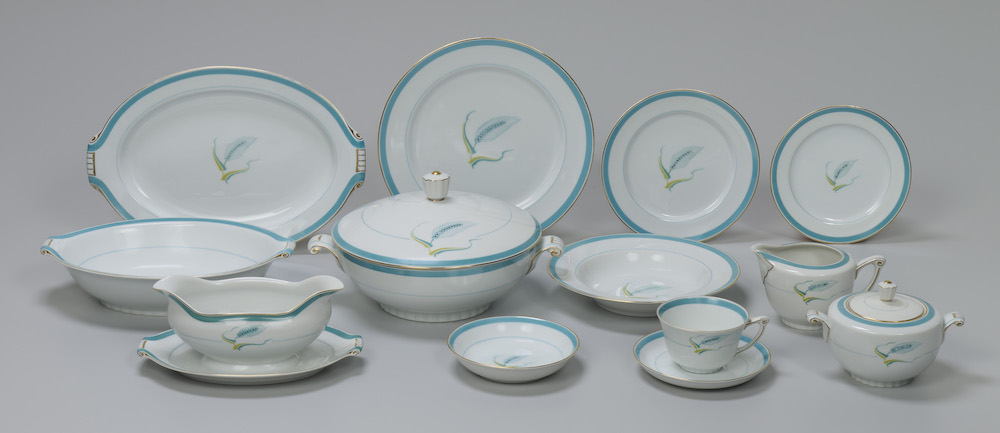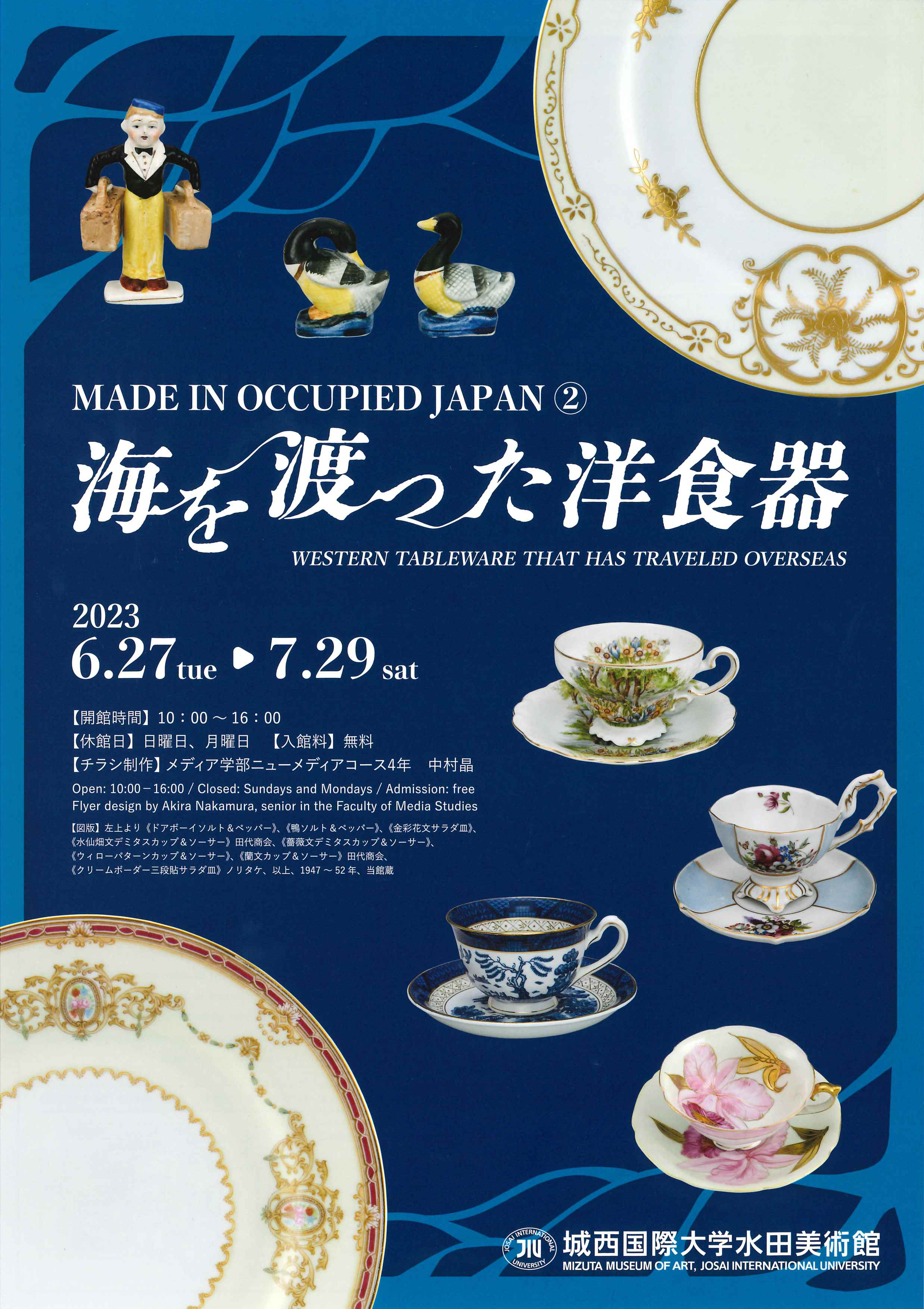During the postwar Allied Occupation, Japanese exports had to be labeled "Made in Occupied Japan" from when civilian trade resumed in 1947 until 1952. In that period, a variety of products were exported, primarily to the United States, including ceramics, lacquerware, metalwork, toys and cameras, which in recent years have become popular collectors' items.
The new exhibition shows Western tableware that has been donated by a collector. This is the second time for us to exhibit a collection of artifacts made in occupied Japan. Japan started to export Western tableware widely during the Taisho period, when it was an important way to acquire foreign currency. They were fashionably designed to please American consumers and not surprisingly enjoyed great popularity. Noritake, one of the tableware manufacturers, became an internationally renowned brand. Exports of Western tableware resumed promptly after the Second World War, which supported the reconstruction of postwar trade. Enjoy this collection of Western tableware that has returned to Japan for the first time in approximately 70 years after having adorned the tables of ordinary Americans. The collection includes dinner sets, coffee cups, demitasse cups, salt and pepper shakers made in occupied Japan and inspired by European food culture.

Duck-shaped salt and pepper shakers, 1947-52,
Mizuta Museum of Art, Josai International University

Cup and saucer with Willow-pattern design,1947-52,
Mizuta Museum of Art, Josai International University

Dinnerware “SONATA”, 1947-52, Mizuta Museum of Art, Josai International University



